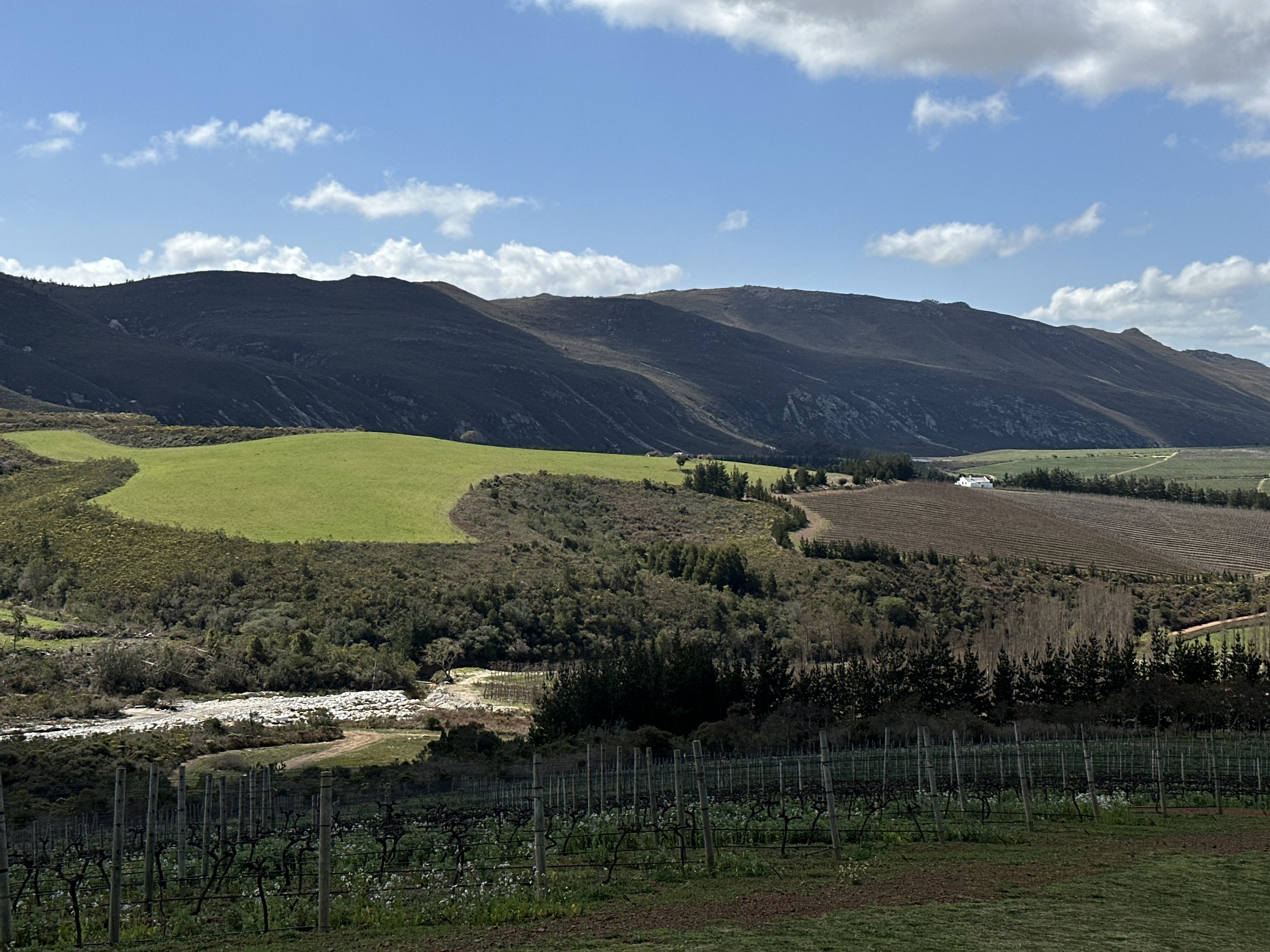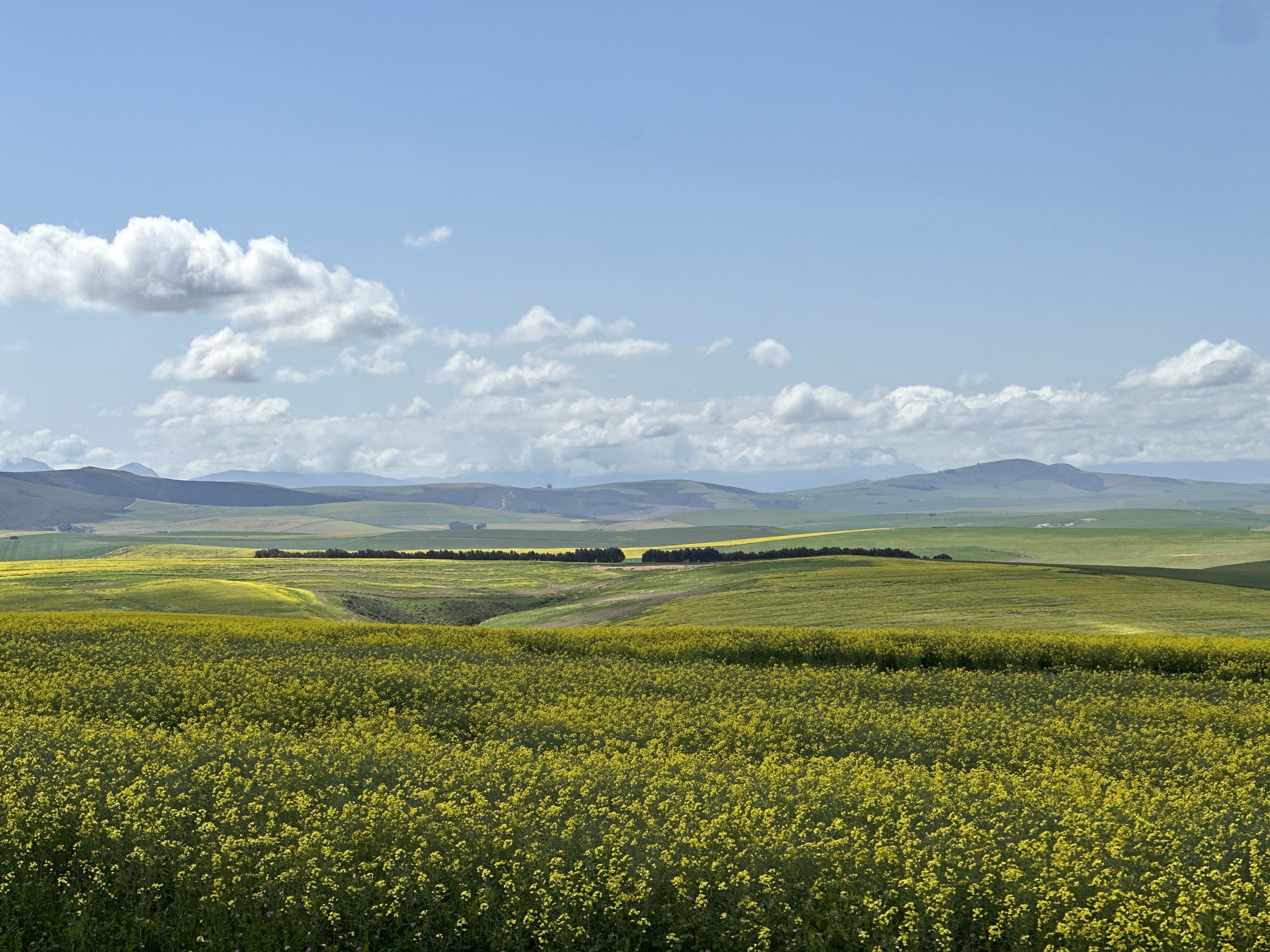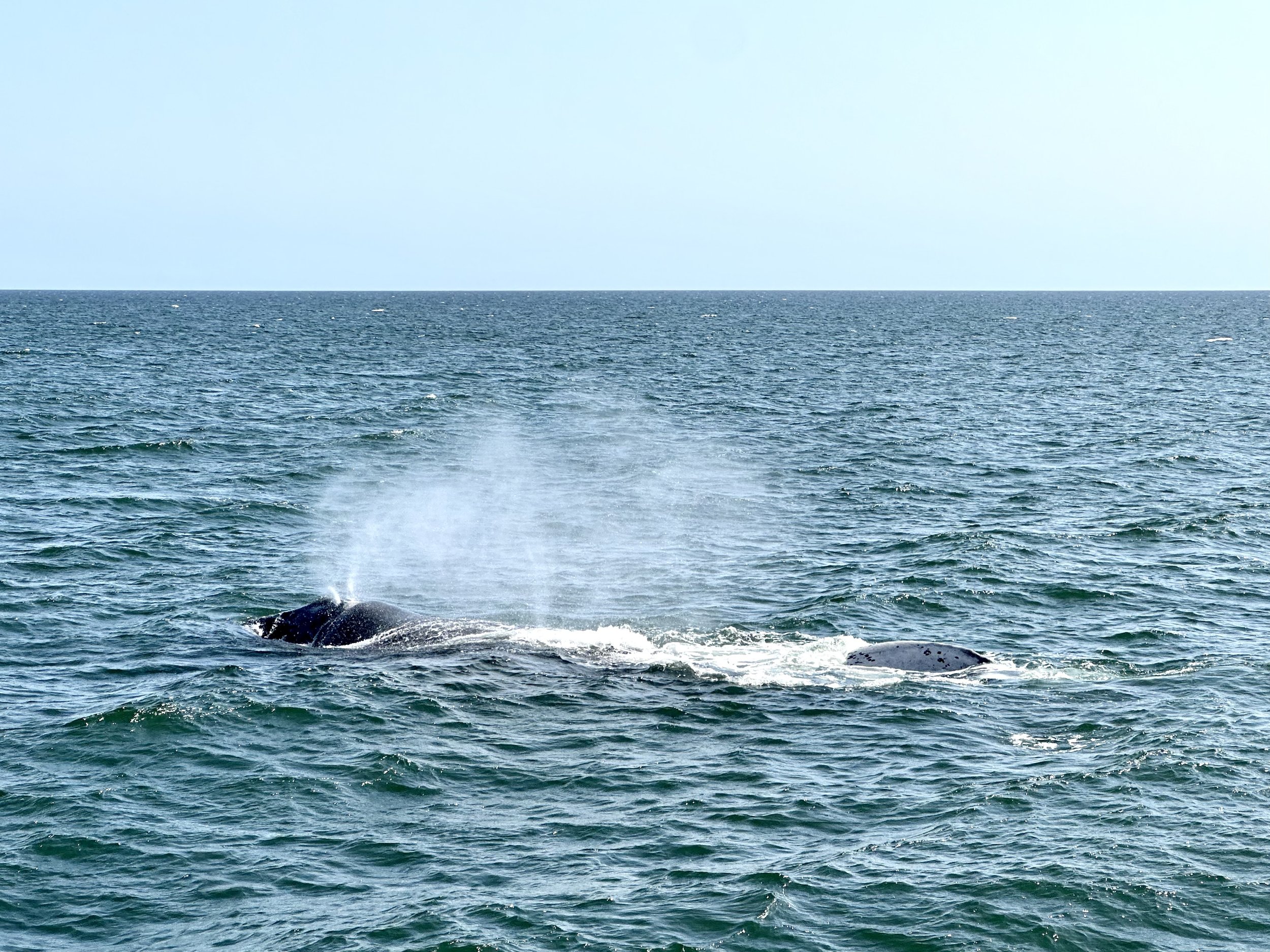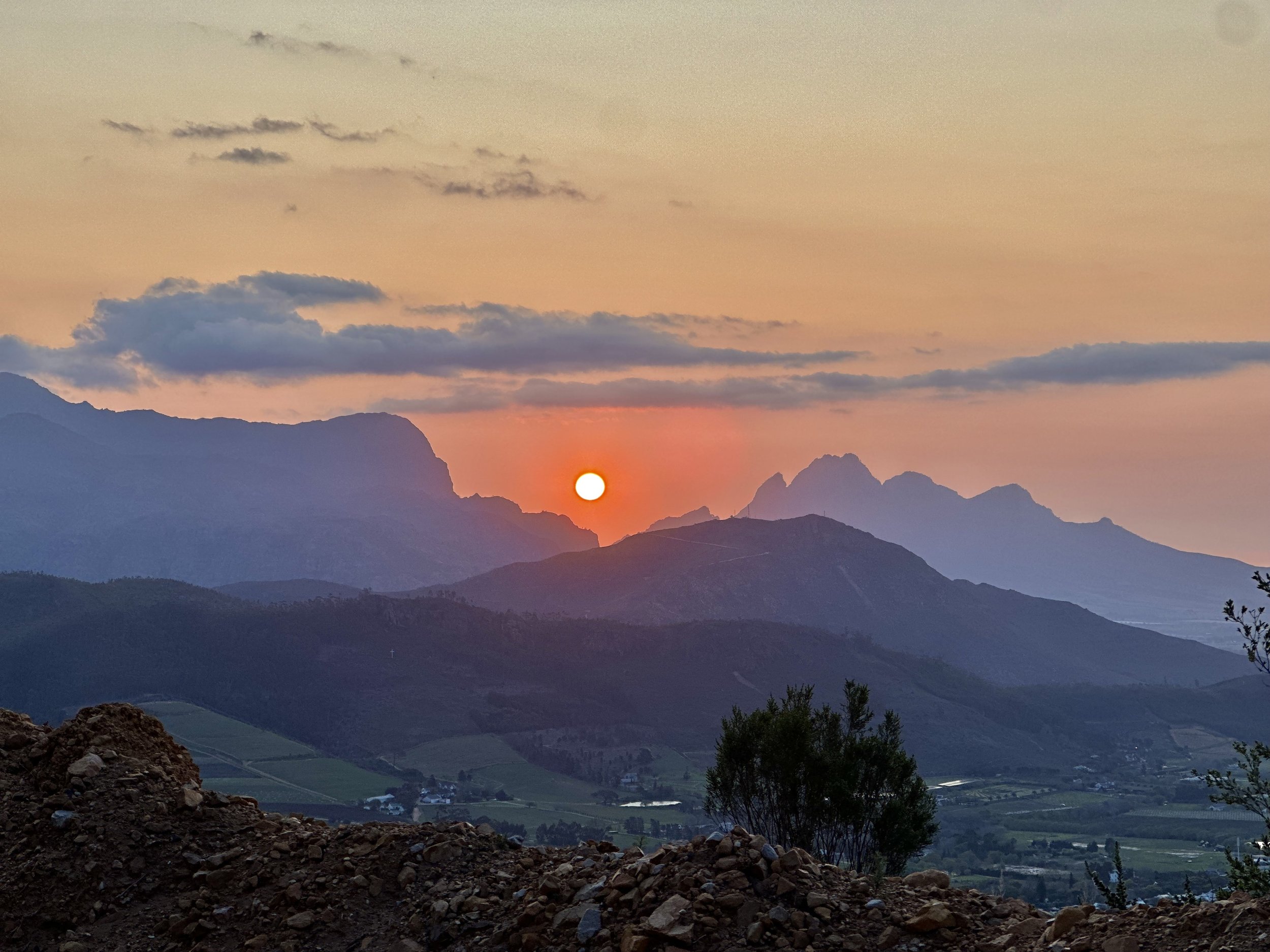After traveling the world a bit, I have realized that a lot of places look similar to one another. The high end shopping districts of different cities all bear a striking resemblance to one another: Mexico City, New York, Paris. Each certainly has its own flavor, but when you pass the Gucci store in any given city, the neighborhood starts to look familiar. This is also true of the countryside, both the agricultural and the raw beauty of untouched wilderness. A wood is a wood, a hill is a hill, a dale is a dale.
This might look like Sonoma County on first glance. It is a winery near the town of Stellanbosch, South Africa.
I grew up in the part of Northern California known as “wine country,” and I’ve found this global resemblance to occur particularly in different wine-producing areas in the world. My home town is Santa Rosa, which is a rather bland sort of suburb, but it is surrounded by the picturesque towns of Sebastopol, Petaluma, Sonoma—and some of the most beautiful landscapes in the world. But these landscapes also bear a striking resemblance to the parts of Italy and France where wine is made. This is not just a coincidence! Growing grapes for wine requires a very specific type of climate and landscape.
Fields of mustard flowers were a common sight during spring in my childhood, but they looked nothing like this.
Then, there are the places that look like nothing I have ever seen before: the waterfalls of Yosemite and Iceland, which resemble each other only in that both are amazing. Yosemite perhaps resembles Torres del Paine, its southern hemisphere counterpart in Chile, but only a little. These extraordinary places in the world have no peer. The landscapes I saw in the wine country in South Africa combine both this kind of incomprehensible grandeur and an odd sense of nostalgia for my childhood.
Petaluma, you could never.
I recently went to Cape Town to visit my mother (and also because Kazem has been rehearsing an opera there) and we drove a portion of what is known as the Garden Route, a series of scenic drives that lead east from Cape Town. Driving through these landscapes was a psychadelic experience for me. Sometimes the view would seem oddly reminiscent of the drive to my grandmother’s house when I was a child, but distorted into vistas of such grandeur that I literally could not believe what I was looking at. I kept saying out loud as I was driving, “Do you see that? Are you seeing this?”
The mother is respirating, the smaller white whale following behind. Over time the white will turn a dark brown.
We also went whale watching and wine tasting—I am more of a whale person than a wine person, as anyone who sees the enormous tattoo of a blue whale on my left thigh might guess. The town of Hermanus is one of the best places in the world to see southern right whales, and the whale watching boat tour lived up to the hype. We saw a semi-albino whale calf swimming with its mother, and then we saw two whales engaged in the underwater activity which causes mothers to become pregnant with calves. Doesn’t look like much on the surface, but I am assured that what is going on underneath is absolutely pornographic.
Whales mating.
Usually on a whale watching tour I avoid taking pictures, because I see the animals better than I would looking at them on my phone. But there were so many whales, and they stayed near the surface for so long, I finally couldn’t help it and started taking photos and videos. They are all terrible. You need to see these creatures in person.
Southern right whales are one of three species of right whale, which were all at one time hunted almost to extinction. The name of the species refers to the fact that they were slow and easy for hunters to catch, and they yielded large amounts of whale oil—so whalers considered them the “right whale” to hunt. The southern right whale population, which feeds off the coast of Antartica and then moves into warmer waters to breed, has recovered somewhat, but Northern Pacific right whales are still few in number, and Northern Atlantic right whales are so rare that they hover on the edge of extinction. And though the number of the southern species of whale has increased since they have become protected internationally, they are now threatened by climate change. Our tour operator described how during the summer, when the water is usually filled with breeding whales, they saw only Humpbacks. The right whales arrived eventually, but not until September.





